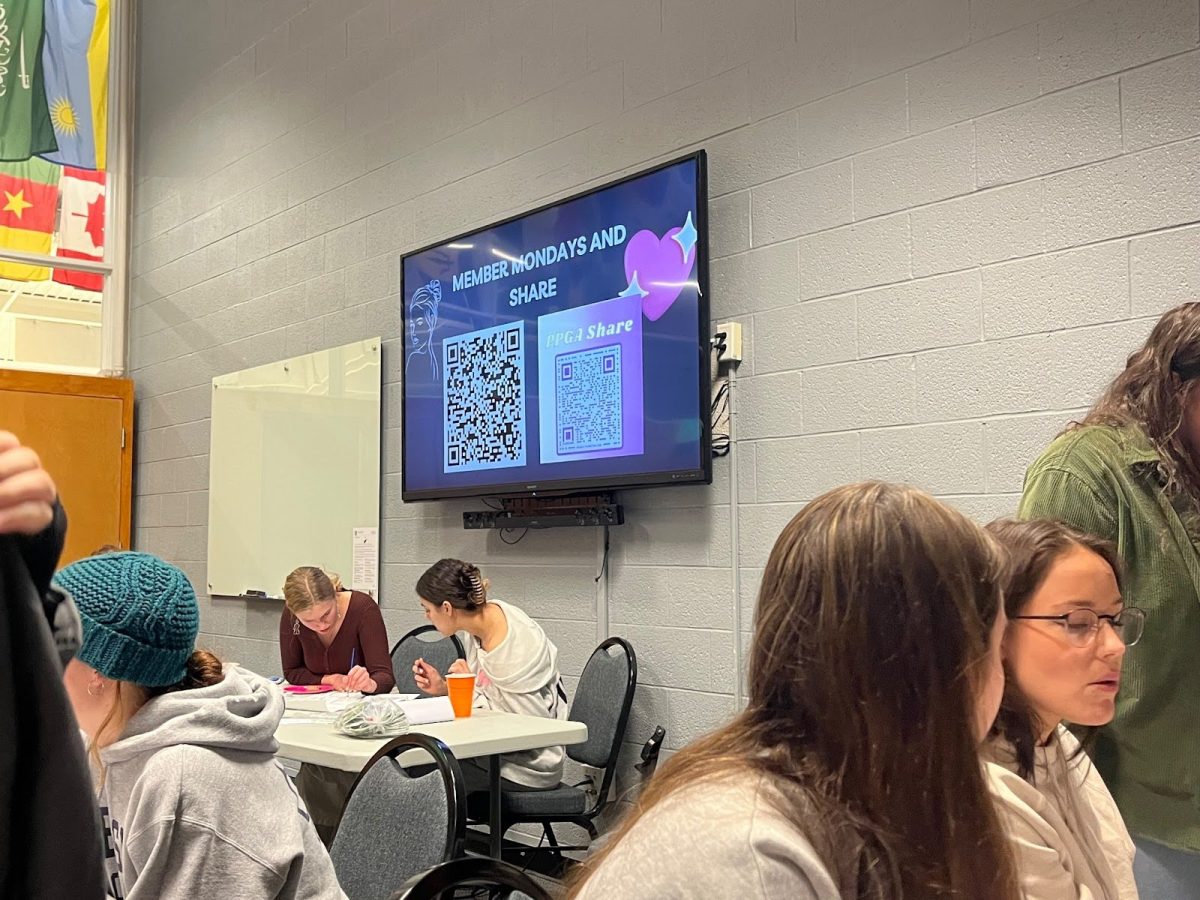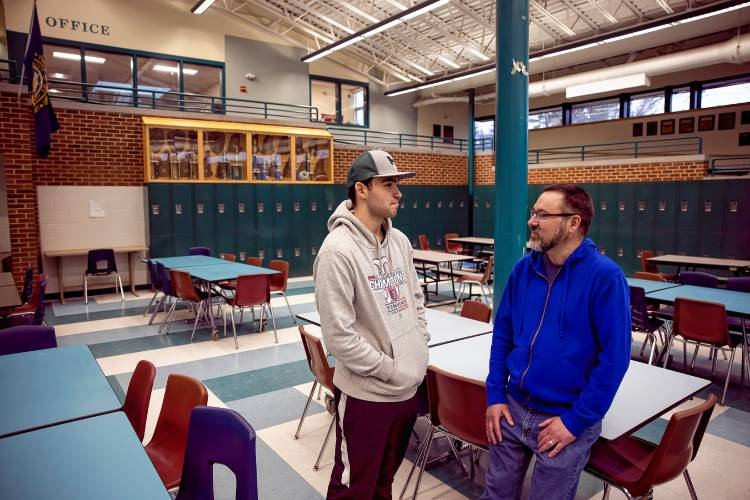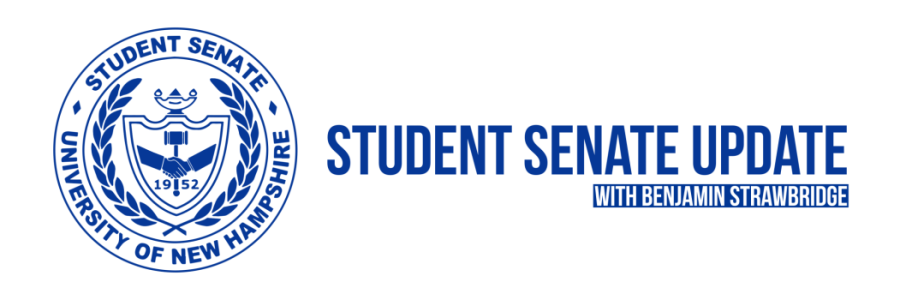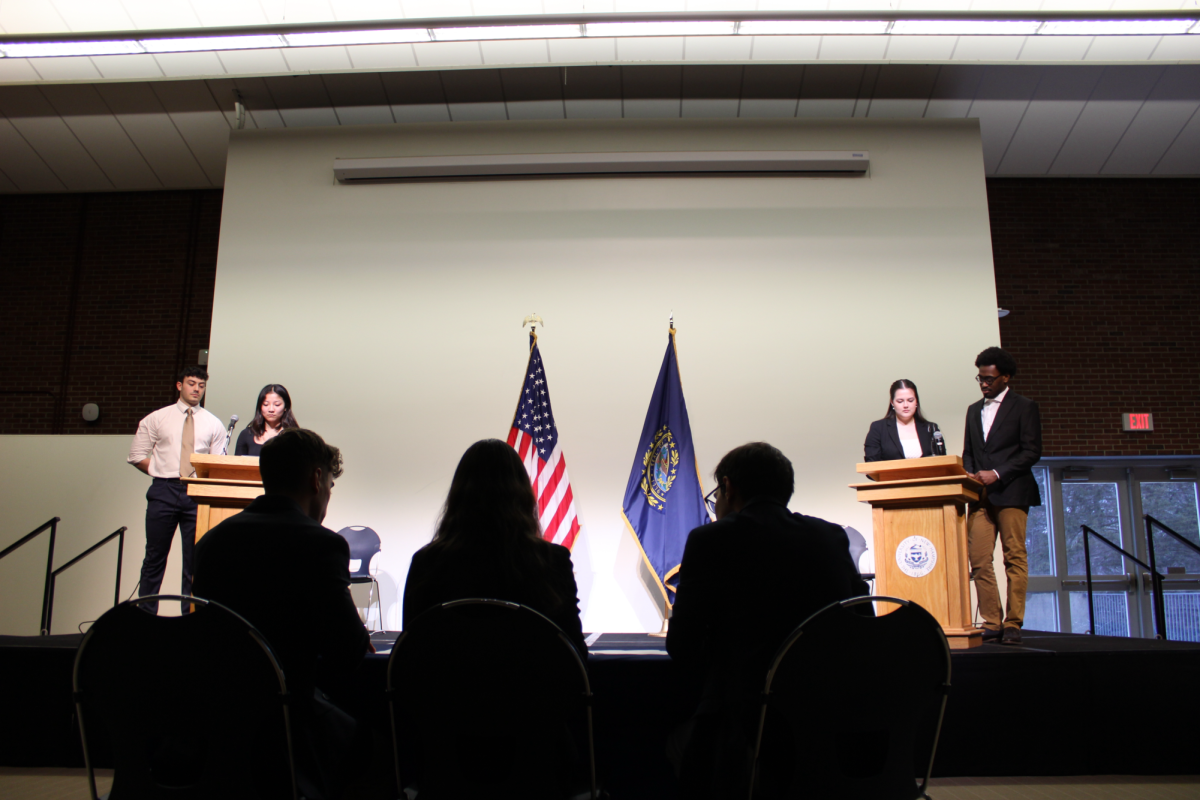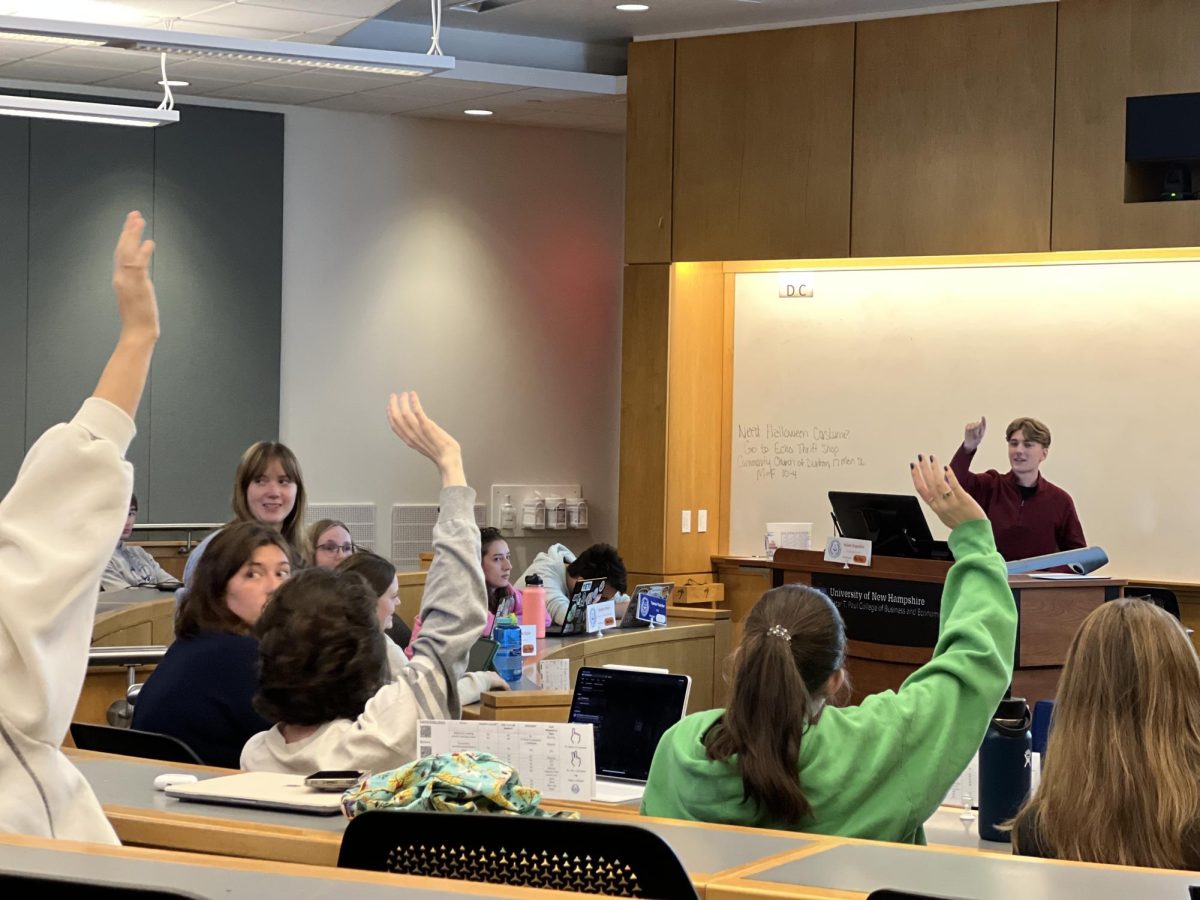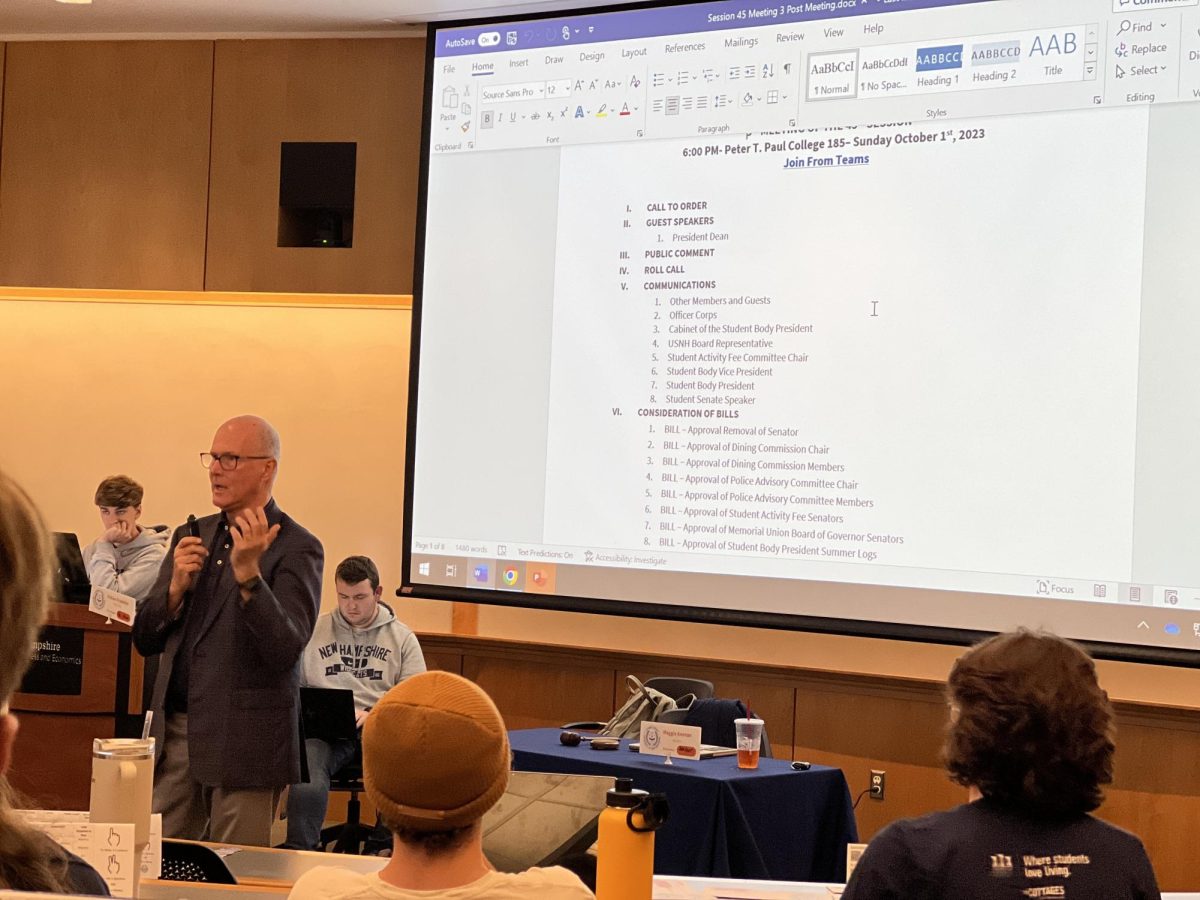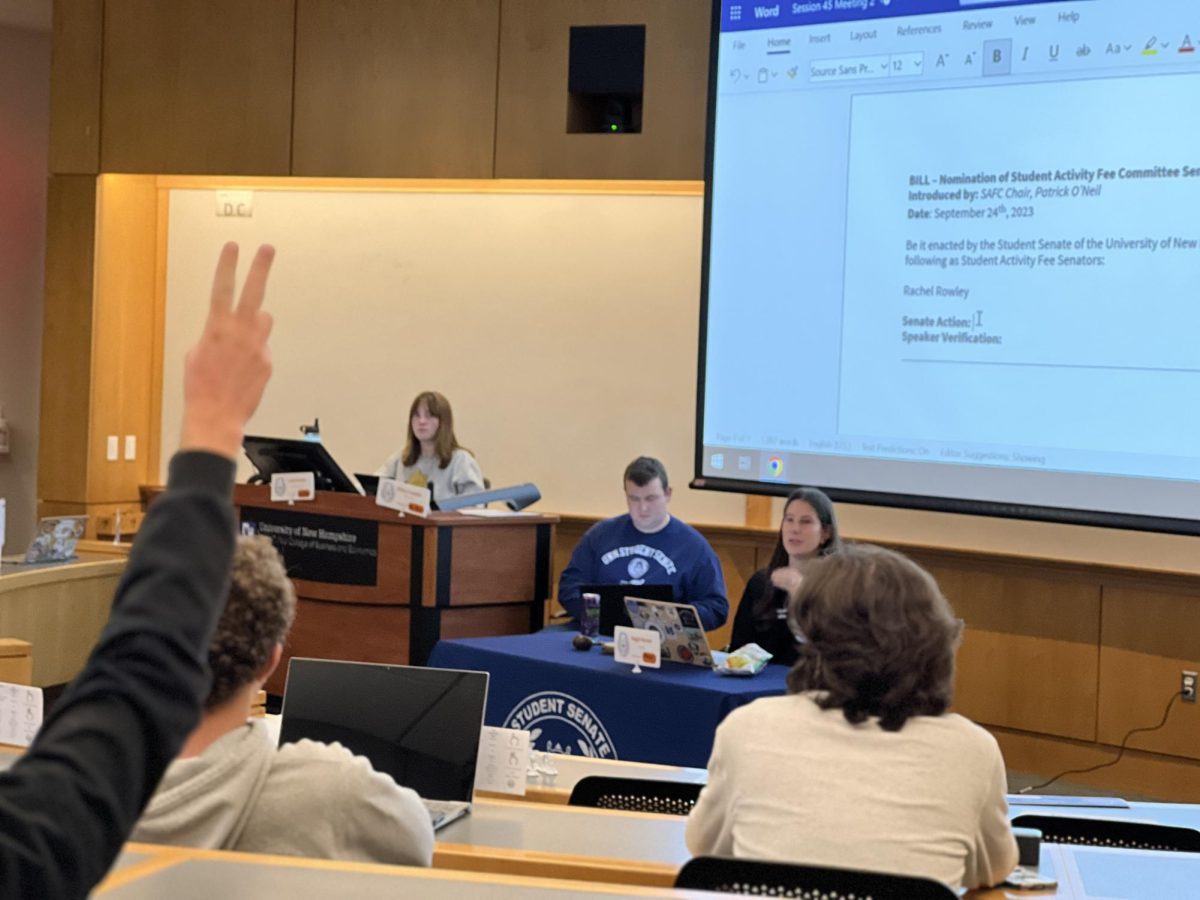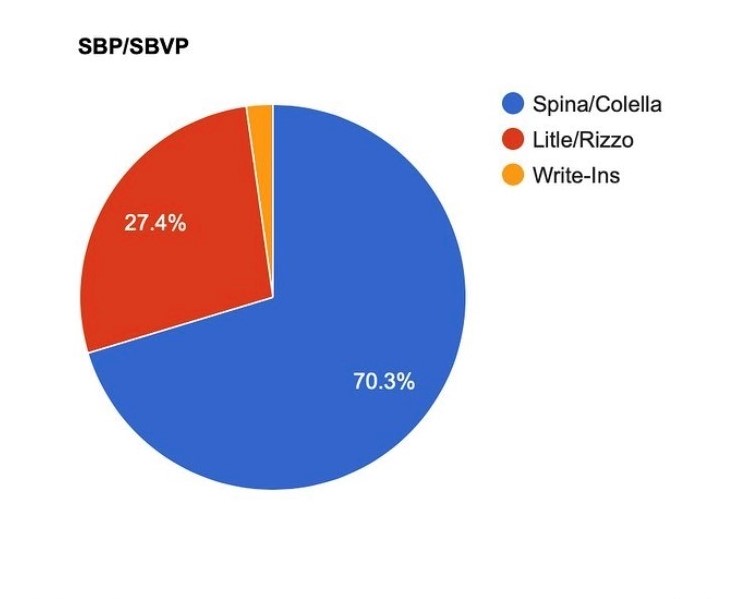STUDENT SENATE: AN INTRODUCTION
In Jan. 2018, the University of New Hampshire (UNH) announced lecturer cuts aimed at the College of Liberal Arts (COLA), effective at the end of the spring semester. The announcement and eventual loss of 17 lecturers sparked both intense debate between students and administration and conversations about overall administrative transparency. One of the more prominent student organizations to call for such openness was the university’s Student Senate.
For returning students familiar with the controversy, the name “Student Senate” may ring a bell concerning their efforts and multiple passed resolutions urging greater transparency from the university’s top administrators and the full effects of the layoffs on affected courses and departments.
But first-time students may be wondering: What is Student Senate?
“Senate is a lot of things,” Student Senate Speaker and UNH junior Nicholas LaCourse explained to The New Hampshire on Aug. 22.
“It’s, number one, the voice of the students at this university; it is the best way for students to get across…what they want to see at this university, the town [and] the state. There’s no other institution even close to what Student Senate is on this campus…that can argue for what’s best for students.”
More precisely, Student Senate, according to its official website, “and the various offices and officials underneath it work to advocate for student concerns, and to sway the Administration to act in the best interests of the Student Body,” adding that it acts “autonomous of the Administration.”
The senate consists of a speaker (LaCourse), Student Body President Ethan McClanahan and Vice President Jake Adams. Over 30 senators represent the majority of the residence halls on campus, while off-campus residents are also represented by non-resident senators. Several of the senators chair various councils ranging from Academic Affairs and Health & Wellness to Community Development and Campus Structure.
Additional officers include Parliamentarian Jesse Austin, Executive Officer Caelin McMahon, Director of Public Relations Brittany Dunkle, Business Manager Abigail Sheridan, and Historian Tyler Anderson. The aforementioned officials, as well as Chairperson Joshua Velez and Financial Officers Emily Cochran and Payton Taylor of the Student Activity Fee Committee (SAFC), operate under the direction of the Speaker.
After last year’s Session 39, Speaker LaCourse – who joined Student Senate in Sept. 2016 and has previously served as an Alexander Hall Senator and Director of Public Relations, among other roles, hopes for a Session 40 that focuses on bringing in a more diverse cast of officials in terms of majors and backgrounds, finding ways to fight rising student tuition and continue efforts on improvements to transparency. Last year’s Student Body Presidential election saw a rare appeal of the results from the Joey Ramirez/Thomas Libby ticket. The body is hoping to improve how it handles these election appeals in the future.
“What students saw in Session 39…was a Senate that, you know, maybe could have done a little better with the election…reaching out to students [and] communicating with them,” LaCourse said, adding that members of the body are “definitely excited” to provide greater diversity, more “consistent” elections and urging for greater accountability in terms of university spending, among other pressing campus issues.
The Student Senate meets Sundays at 6 p.m., with a final location still to be determined; Sept. 9 marks the first meeting of Session 40.
HISTORY OF THE SENATE
The assembly has its origins in 1907 as the Student Council, which, per the Senate’s webpage, “was largely responsible for supervising relations between the separate class governments and for contests and activities between them.” Throughout the early 20th century, the body expanded to include a Student Body President, fraternity members and faculty in 1912 (faculty had no part in the assembly by 1950). In 1952, the council merged with the female-only Association of Women Students to create the renamed Student Senate.
In May 1969, as part of an ongoing conflict between students and faculty over the weight of student voices in significant collegiate matters, UNH forced the Student Senate to dissolve following a committee the previous year that formed a new University Senate that would serve to meet the needs of both students and faculty equally; the new body had equal members of faculty and students, with the latter group labeled as the Student Caucus.
However, persistent issues with the system’s mixed composition, on top of growing student frustration at the faculty’s ability to control student representation – not to mention faculty dissatisfaction at having “equal voting rights as the students they taught in their own classrooms,” per the Senate website – led then-UNH President Eugene Mills to dissolve the University Senate in the spring of 1977. Per the Senate webpage, the split resulted in the formation of both the Academic Senate (the precursor to today’s Faculty Senate) and the current form of Student Senate, which is based on a similar structure and constitution to its predecessor.


